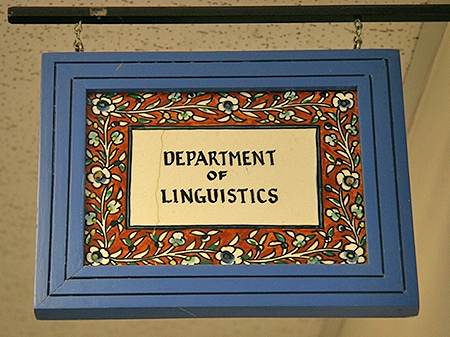
Linguistics ETDs
Publication Date
Spring 5-1-2017
Abstract
I analyze one of the motion verbs in Korean, kata ‘go,’ and its argument structure constructions. The verb shows an extremely high token frequency and its argument structure constructions have been subject to a great degree of variation in terms of its emergent semantics and syntax. However, there have been recurring issues across the previous studies. First, there is the problem of the so-called “written language bias in linguistics” (Linell, 1982), such that most studies on kata have drawn upon mostly invented sentences or written language data. Secondly, previous studies on kata have focused on the verb itself and have made few efforts on examining the construal of kata as it relates to the argument structure constructions in which the verb appears. Considering what has been pointed out so far, on the basis of contemporary Korean spoken data extracted from Sejong Corpus, the current study aims to establish argument structure constructions focusing on the specification of components, i.e. the subject, the oblique phrase containing the suffix, and kata. Argument structure constructions where kata appears and their components are fully specified are called kata-specific constructions. The objective of this study is to outline the alternations of the argument structure constructions in the physical motion domain, and how and to what extent they are inherited by other semantic domains in accordance with semantic extensions. All the semantic domains are argued to be metaphorically or via constructionalization extended from the physical domain. Further, I aim to examine whether the Principle of Maximized Motivation works or not by virtue of two types of cluster analysis. The first one based on binary coding showed that the metaphorical extension and constructionalization starting from the physical motion domain is not limited to the semantic side, but it also influences how and to what extent the allowed argument structure constructions in the physical motion domain are inherited by other semantic domains. This advocates the Principle of Maximized Motivation. However, the second cluster analysis based on relative frequency showed that abstract motion inherits frequency patterns concerning alternations of argument structure constructions from physical motion to the strongest degree, which weakens the principle.
Document Type
Thesis
First Committee Member (Chair)
William Croft
Second Committee Member
Jill Morford
Third Committee Member
Christian Koops
Recommended Citation
Kim, Jin Hee. "From Physical Motion to ‘Come and Go’: A Spoken Corpus Based Analysis of Kata ‘go’-specific Constructions in Korean." (2017). https://digitalrepository.unm.edu/ling_etds/53
